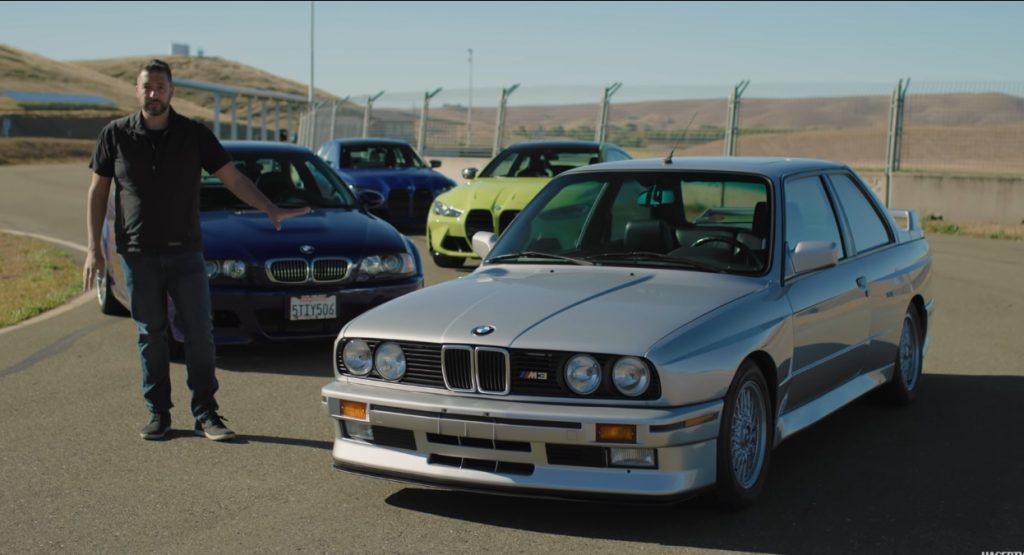The modern-day M3 is great on so many levels but, along the way, what made the original E30 M3 special has been lost — at least, that’s what Jason Cammisa from Hagerty thinks. However, that doesn’t stop the latest M car to wear the M badge being one heck of an overall package. In the following video, we’re presented with a history lesson on all you’d ever want to know about the M3.
Spawned from Munich’s finest, the original E30 M3 was “a car that speaks to you”. The E30 allows the driver to feel every single sensation, regardless of it being a spirited drive on the track or a B-road thrash. It’s a mechanical symphony when the car is in its sweet spot which, being a naturally aspirated four-pot, was at the higher end of the rev cluster.
The rise of the BMW M3 can be credited to Mercedes-Benz and the 190E 2.3 16 — although not many realize it. The 190E, better known as the “Baby Benz”, was the company’s first attempt at entering the compact car category. The need for a compact car came due to the fuel crisis of the 1970s. After major development costs and the project almost been axed by the board of directors the car went on to sell over 1,800,000 cars over its 11-year production run. Along the line, engineers at Mercedes developed the W201 2.3 16, a sports version of the baby Merc. The car was built with the help of Cosworth and was an engineering masterpiece breaking multiple records.
Watch: BMW Tells Us The Story Of The Classic E30 M3 Cecotto Limited Edition
BMW had one goal in mind: to beat Mercedes. But, unlike Merc, the Bavarian marque already had a strong history of producing fast and fun little sedans. The M3 itself was only 0.2 seconds faster than the 325i Sport, and its mechanical components were sourced from another BMWs. However, the E30 M3 wasn’t really a big seller as the 325i with its lower price tag and bigger six-cylinder engine provided almost the same exact performance specifications as the four-cylinder M3.
Both the BMW E30 M3 and the Mercedes Benz 190 2.3 16 dominated the DTM championship in what could be described as the battle between Stuttgart and Munich. The E30 M3 however was the more successful car, by a hair, winning 48 races over the Mercedes’ 42. That wasn’t the only victory though — out of the two the M3 badge continues to survive to this day.
And that’s because BMW changed their strategy. As Cammisa says, it’s the E46, instead of the E30, that should be remembered as the zenith of the M3. It combined the racecar for the road dynamics into a package that people actually wanted to buy. Plus, it’s still the kind of car that modern cars aspire to replicate.
However, while you can’t argue the latest G80 M3 is nothing like either the E30 or the E46, it’s still a great chassis – perhaps one that has no business being as fun to drive as it is.
Whilst it may not be as engaging as the original, it’s way better than the last two generations. Despite the fact that its grill is almost the size of two coffins, the latest M3 has al the power and chassis for whoever is lucky enough to drive to maintain a wide smile on his face. It’s the perfect car so long as you can “ignore the badge,” says Cammisa.




